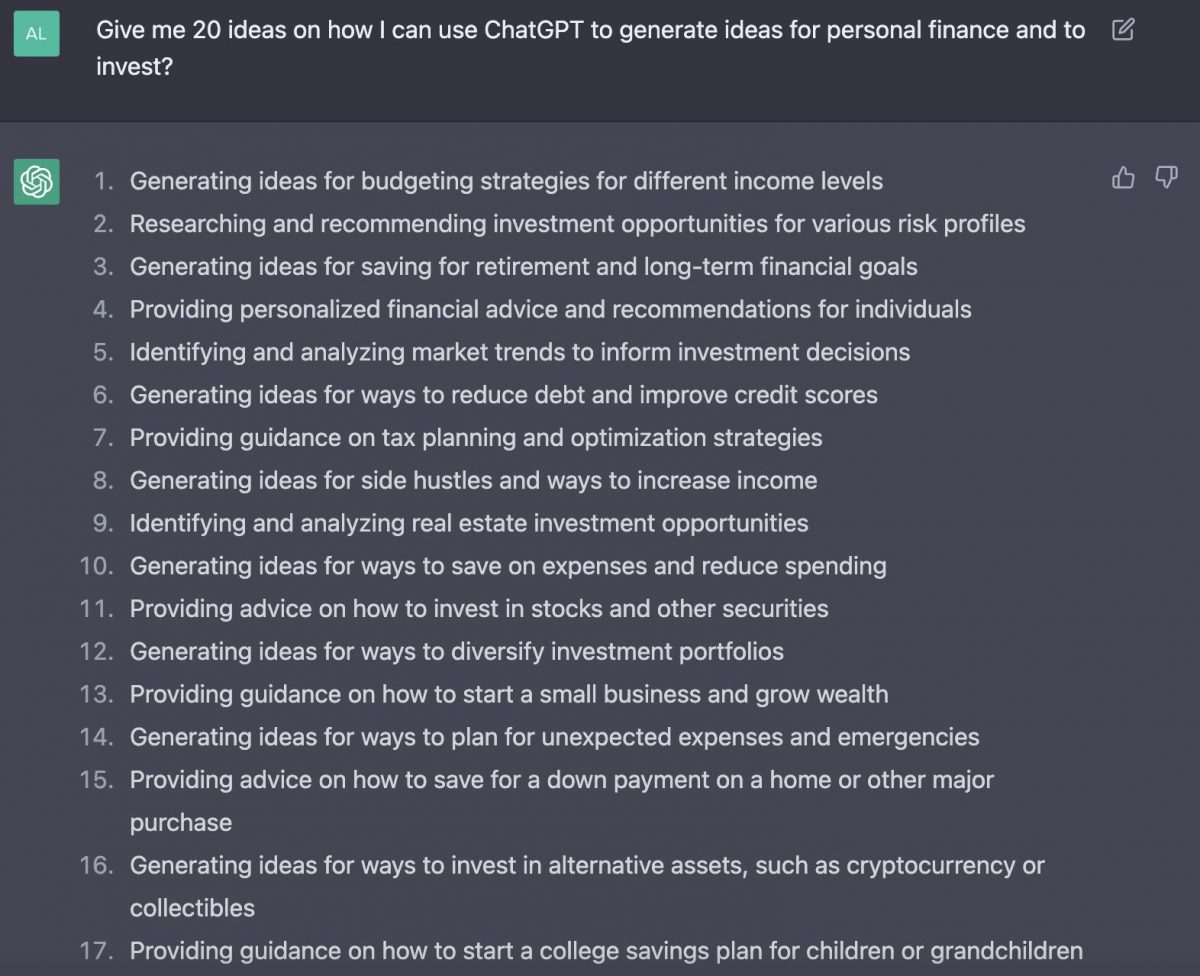Have you heard of ChatGPT?
ChatGPT is a chatbot launched by OpenAI in November 2022.
ChatGPT has taken the world by storm since its launch, crossing 1M+ users in just 5 days — a feat it took Instagram 2.5 months and Facebook 10 months.
It’s a validation of how impressive (and slightly scary) the technology is. The AI chatbot’s ability to answer any question and produce a human-like answer has been nothing short of stunning.

People are showing off ChatGPT’s wild range of skills, from essay writing to explaining quantum theory in the style of Snoop Dogg.
These showcase the wonderful creativity and versatility of ChatGPT.
ChatGPT has crossed 1M+ users in just 5 days.
— Aleksandr Volodarsky ???????? (@volodarik) December 8, 2022
To compare, it took Netflix 41 months, FB – 10 months, and Instagram – 2.5 months.
But many haven’t yet realized its full potential.
Here are the 10 mindblowing things you can do using it right now:
But you can also use ChatGPT and other AI apps as practical tools to improve your finances.
Despite still being in beta mode, these AI-powered tools are already capable of radically increasing your productivity and learning.
Here are 6 easy ideas, tools and tips you can use to get started!
This article was written by a Guest Contributor.
Using ChatGPT to Brainstorm

ChatGPT is a wonderful tool for ideation. Unlike humans, it is excellent at generating a high volume of ideas instantly.
“To come up with one good idea, you need to generate lots of ideas”, writes Ethan Mollick, a professor at Wharton.
Let’s try asking ChatGPT for 20 ideas on how to use it to generate ideas for personal finance and investing:

It accomplished in 20 seconds what might have taken someone 20 minutes.
Using ChatGPT as a research assistant
Large text-based language models can be a great help for research, such as providing assistance or even co-authoring.
They are able to search for facts and quotes, as well as form an outline based on a simple idea.
Besides Google and Wikipedia, you now have a new powerful tool at your disposal.
If you’re trying to understand a new business concept or industry, ChatGPT can save you a ton of time in researching.
So, for example, you might ask ChatGPT, “What questions should I be asking when researching the semiconductor industry?”
![]()
These types of open-ended questions are great for when you don’t know what you don’t know. Rather than stumbling in the dark, ChatGPT gives you a starting point of providing the right questions to ask to fill your knowledge gap.
BTW – we share commentary on Singapore Investments every week, so do join our Telegram Channel (or Telegram Group), Facebook and Instagram to stay up to date!
I also share great tips on Twitter.
Don’t forget to sign up for our free weekly newsletter too!
[mc4wp_form id=”173″]
Using AI-powered Excel formula tools
There are personal finance and investing Excel gurus who have a spreadsheet for everything. Dashboards automatically calculate your portfolio returns, break down expenditures, and chart their progress towards retirement, etc.
AI allows you to create similarly impressive spreadsheets even if you’re not an Excel expert. By simply typing what you’re looking for in natural language, it can generate an Excel or Google Sheets formula.
It can answer prompts as simple as producing the formula for the “average of column A” or as difficult as “extract the fourth word in A1 only when cell B1 is greater than 100 and when C1 starts with the word ‘hello’ and ends with the word ‘goodbye’.
ChatGPT is capable of handling such prompts, but you can also consider specialised tools like SheetAI and Excel Formula Bot if you’re a heavy user.
Summarise text & copilot reading
Charlie Munger once wrote: “I don’t think you can get to be a really good investor over a broad range without doing a massive amount of reading.”
For investors, this means constantly reading books and staying updated on market trends and company fundamentals for the stocks you’re following. The reading list can quickly pile up, and it can take a long time to go through annual reports, earning call transcripts and analyst reports.
Fortunately, GPT-3 is excellent at summarising long-form text to save you time.
It can be as simple as copying text into ChatGPT and asking it to provide a summary.

There are also specialised reading apps that are beginning to incorporate AI.
One of my favourites is a newly launched read-it-later app, Reader.
Apart from being a wonderful app for power readers that allows you to capture all your reading material from Twitter, PDFs, and newsletters subscriptions — all in one place.
Their AI-powered tool, Ghostreader, summarises whole documents or sections. It can also simplify complex language and look up terms — both of which are useful for getting through dry and complex documents.
YouTube Summary with ChatGPT — Chrome extension
This one is simple: get an instant summary of YouTube videos.
This Chrome extension created by a startup, Glasp, works well and integrates nicely with YouTube. This is particularly useful for summarising long videos like the “Talks at Google” series featuring Aswath Damodaran.
Summarise podcasts with Snipd
As we wrote previously, podcasts are an amazing resource to learn on-the-go.
Two-hour podcasts are fantastic sources of knowledge. But it’s difficult to skim through to find what you’re looking for. And the medium is unsuited for storing and reviewing your highlights.
These are some pain points Snipd aims to solve. Snipd is, firstly, a “podcatcher” app like Apple Podcasts or Overwatch.
But it has AI-powered features to transcribe podcasts, allows users to easily export highlights to note-taking apps, and automatically generates book-style “chapters” to easily skip through content.
Consolidate your personal financial data with SGFinDex

AI-powered financial insights are only as good as the data it’s fed. But the problem is records of your assets and liabilities are scattered across multiple institutions. And when machine-learning algorithms only see part of the picture, the result is inevitable: garbage in, garbage out.
Two years ago, SGFinDex was launched to solve this problem. The government initiative allows Singaporeans to securely view their consolidated personal financial data. This brings all your money in one place: cash, credit card, investments in your CDP, property, insurance policies and CPF balances.
All three major banks have financial planning applications that leverage this data, such as DBS’ NAV Planner. Having access to high-quality raw data enables these banks to use AI and Machine Learning to provide actionable insights to help you manage your finances and investments.
Conclusion
We are on the cusp of a new era, where AI-powered tools can be used to enhance our lives.
From ideation and research to financial management, AI tools offer a wide range of solutions to help individuals make smarter decisions and stay on top of the latest trends.
